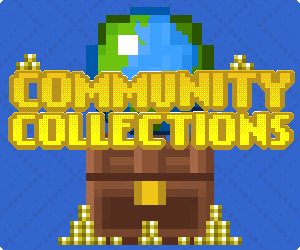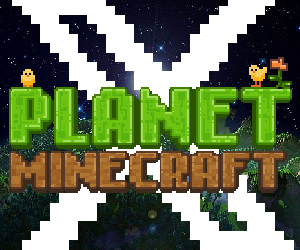276
In this tutorial I’ll be showing you how Minecraft Bedrock blockshapes and block variations work and how I used them to port StackPack. You can refer back to my basic tutorial if needed. Bedrock edition doesn’t allow for truly custom block models, but we can use so called “blockshapes” to chose between several different models.
Click here for a full list of blockshapes.
NOTE: AgentMindStorm has made a very detail tutorial that covers most things about blocks except blockshapes here.
1. Blockshape Models:
I used the “block” blockshape to imitate FishStacks' 3D dripstone models. This follows the method found in this 3D dripstone pack. Other blockshape packs include this melon & pumpkin pack, this beehive pack, or this leaves pack. There are some bugs with certain blockshapes when applied to certain blocks including some blockshapes that don’t tint leaves correctly.
We will begin by creating a “blocks.json” file inside of the pack folder. This is where we will change the blockshape and texture path to pointed dripstone.

I changed the blockshape to “block”, however others can be used. This will make it so that the pointed dripstone fills in the hitbox. I also needed to change the texture to “dripstone_block” so that it uses the block texture.

NOTE: Download this file here for reference. You only need the sections that control the block you want. The vanilla blocks.json template can be found here.
It appears like this in game. If no texture png is added in your pack, it will be compatible with other packs that have a dripstone block texture.

2A. Texture Orientation & Customization:
I also needed to put in a separate texture for the sides/top & bottom of netherwart blocks.
Once again, we are going to use the blocks.json to change the texture on different sides of netherwart. This will create 2 new texture paths that need to be identified in the “terrain_texture.json”. We will add these sections to identify what texture to use for block faces named nether_wart_1, etc.


The terrain_texture.json should be put inside the textures folder. View my terrain_texture here, and the vanilla one here.

Now that both the blocks.json and terrain_texture.json have been created and there are textures for the paths that you added, it should now work in game.

2B. Texture Customization:
FishStacks’ beacon uses a special glass texture. This is slightly easier to add because we only need to change the terrain_texture because we are not changing the orientation of the texture.
We will need to write in the texture of the beacon glass replacing the regular glass texture.

Once again, if we have a texture named “beacon_glass”, your block should now work in game.

NOTE: Textures can be named whatever you want as long as you use the correct name in the blocks.json/terrain_texture.
3. Block Variations:
StackPack has plenty of block variations, and thankfully bedrock allows this as well.
We will need to edit the terrain_texture.json to add a texture array for the variation.

You will need to include this in the start of the terrain_texture. Download mine here.

Now you can test it in game. I believe whatever the first variation is is what will show up in your hand.

Thanks for using this tutorial! More on their way soon :)
Click here for a full list of blockshapes.
NOTE: AgentMindStorm has made a very detail tutorial that covers most things about blocks except blockshapes here.
1. Blockshape Models:
I used the “block” blockshape to imitate FishStacks' 3D dripstone models. This follows the method found in this 3D dripstone pack. Other blockshape packs include this melon & pumpkin pack, this beehive pack, or this leaves pack. There are some bugs with certain blockshapes when applied to certain blocks including some blockshapes that don’t tint leaves correctly.
We will begin by creating a “blocks.json” file inside of the pack folder. This is where we will change the blockshape and texture path to pointed dripstone.

I changed the blockshape to “block”, however others can be used. This will make it so that the pointed dripstone fills in the hitbox. I also needed to change the texture to “dripstone_block” so that it uses the block texture.

NOTE: Download this file here for reference. You only need the sections that control the block you want. The vanilla blocks.json template can be found here.
It appears like this in game. If no texture png is added in your pack, it will be compatible with other packs that have a dripstone block texture.

2A. Texture Orientation & Customization:
I also needed to put in a separate texture for the sides/top & bottom of netherwart blocks.
Once again, we are going to use the blocks.json to change the texture on different sides of netherwart. This will create 2 new texture paths that need to be identified in the “terrain_texture.json”. We will add these sections to identify what texture to use for block faces named nether_wart_1, etc.


The terrain_texture.json should be put inside the textures folder. View my terrain_texture here, and the vanilla one here.

Now that both the blocks.json and terrain_texture.json have been created and there are textures for the paths that you added, it should now work in game.

2B. Texture Customization:
FishStacks’ beacon uses a special glass texture. This is slightly easier to add because we only need to change the terrain_texture because we are not changing the orientation of the texture.
We will need to write in the texture of the beacon glass replacing the regular glass texture.

Once again, if we have a texture named “beacon_glass”, your block should now work in game.

NOTE: Textures can be named whatever you want as long as you use the correct name in the blocks.json/terrain_texture.
3. Block Variations:
StackPack has plenty of block variations, and thankfully bedrock allows this as well.
We will need to edit the terrain_texture.json to add a texture array for the variation.

You will need to include this in the start of the terrain_texture. Download mine here.

Now you can test it in game. I believe whatever the first variation is is what will show up in your hand.

Thanks for using this tutorial! More on their way soon :)
| Credit | FishStacks |
| Tags |
tools/tracking
6043379
6
bedrock-porting-blockshapes-amp-variations















Create an account or sign in to comment.
If you want to add weights to each variation so one shows up more often you could watch this video that shows that at like 10:30.
https://youtu.be/UfmZeF3L8D4?si=apZ_p11os60GarxV